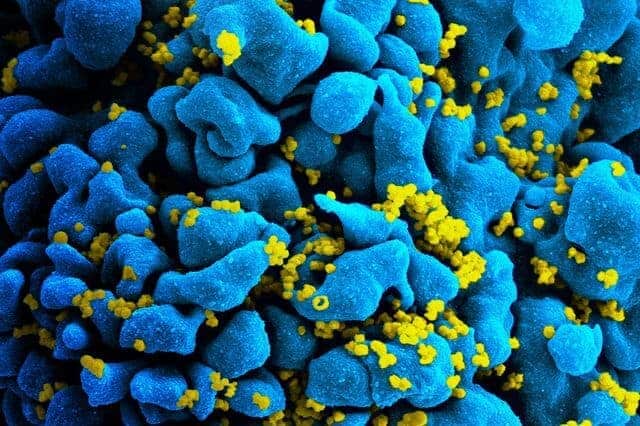New research provides details of how the structure of the HIV-1 virus is assembled, findings that offer potential new targets for treatment.
The study, authored by a multi-institutional team led by Cornell University researchers, was published in the journal Nature. It reports that a small molecule called IP6 plays key roles in the immature development of the virus — which occurs within an infected cell — and in the mature development of the virus, which occurs after the virus buds out of the cell membrane and cleaves from the cell.
“This small molecule acts in two different assembly steps in the pathway,” said Robert Dick, a postdoctoral researcher and the paper’s first author. Dick works in the lab of Volker Vogt, professor in the Department of Molecular Biology and Genetics and the paper’s senior author.
The findings open the door to possible new therapies. One option is for researchers to develop or identify compounds that are similar to IP6 and could bind to the same sites as IP6, thereby blocking it and preventing the virus from maturing.
“A cell can make millions of virus particles, but if they don’t go through the maturation process, they are not infectious,” Dick said.


